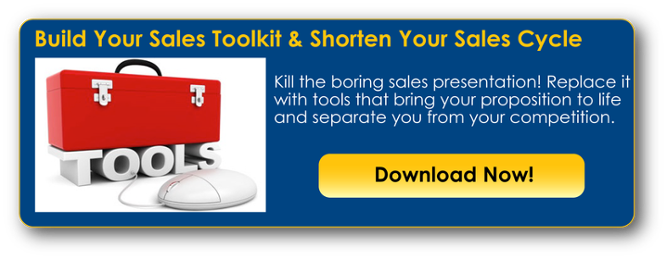Here is a recap of what happened in the search forums today...
Monday, November 30, 2015
Why You Should Invest In Inbound Marketing Before CRM Implementation
Since the beginning of time, humanity has sought to answer unanswerable questions, like which came first, the chicken or the egg? Recently, I’ve come across a question with increasing frequency, that may not be as significant, but is probably even more important if you’re looking to embark upon a journey of accelerated sales growth.
What should you focus on first, building an effective inbound marketing/lead generation process or implementing a CRM to manage your sales and customer acquisition process? While both are important, the question is should you focus on one before the other?
To be clear, both are very important to making growth predictable, sustainable and scalable. If you have the resources and bandwidth you should be pursuing and enhancing both of them simultaneously. However, if you must choose between them, the decision you make will have a significant impact on your growth outlook.
Before answering the question, let’s take a look at the fundamental purpose of each initiative.
The Purpose of CRM
There are several advantages of an effective CRM system with the primary purposes being:
- Building sales efficiency
- Providing management insight into the status and progress of the overall sales effort
- Ensuring compliance with the sales process
- Providing clear reporting
- Creating greater predictability throughout the entire sales process
The Purpose of an Inbound Marketing Program
Here too, there are lots of reasons you’d want to embark on an inbound marketing effort, with the primary purposes being:
- Generating greater awareness and engagement with your desired markets
- Standing out from your competition by creating and reinforcing relevant thought leadership
- Increasing lead velocity and generating more sales qualified opportunities for the organization
To reiterate, all of these results are very important, but I think it’s pretty clear which initiative should be focused on first. That is Inbound Marketing.
3 Reasons Why You Should Focus on Inbound Efforts First
1) CRM Doesn’t Fix Bad Processes, But Inbound Can
An effective CRM system provides tremendous value in increasing the efficiency of a good process. However, it does nothing to address an average or poor process.
For more than 20 years I’ve been working with companies looking to improve their results through CRM utilization. All too frequently significant investments are made in software, time is spent training on the system and absolutely nothing changes. The initial reaction is to blame it on bad CRM, when the reality is that it’s bad process that is the real culprit. Designing a CRM system effectively requires that you have a clear and effective demand generation process that can be mapped to the CRM.
While working on the CRM does little to address bad sales process, the process of implementing an inbound marketing approach does a tremendous amount to improve your sales process (and thus your CRM efforts).
Inbound marketing requires that you start at the top of the funnel and work your way through to the bottom. It makes you view demand and revenue generation from a holistic viewpoint, to understand your market better and to align your sales efforts to how your market behaves today. All of these things drive greater revenue opportunities and create the path to gain the very efficiencies that CRMs promise to create.
2) Effective Inbound Methodology Creates Better CRM Application
I deal with a lot of companies that have been using CRM for years. It is a rare event for me to come across someone who has either designed or implemented their CRM effectively. The data is, to put it bluntly, 90% crap.
A tremendous amount of the value you get from using a CRM comes from the ability to slice and dice the data to segment effectively and increase personalization. However, if you haven’t done the basic work of defining your buyer personas, designing the message to enable you to personalize and to determine how you are going to effectively nurture, you won’t have the clarity to use your CRM effectively.
In my experience, effective CRM reinforces an effective inbound marketing and sales approach, it does not create one. I’ve lost count of the number of times a client has had to substantially change their CRM as a result of the creation of an effective inbound marketing strategy.
3) You Cannot Have Predictable Growth Without Predictable Lead Generation
If I were to summarize the two most valuable benefits of a CRM it would be predictability and efficiency. As I’ve shared, inbound marketing creates the environment for an efficient process, but what about creating predictability?
Simply put, you cannot have predictable sales results or predictable growth if you do not first have predictable lead generation. While creating an effective lead generation strategy certainly involves more than just inbound marketing, inbound is a crucial component.
Inbound marketing enables you to build a true funnel that allows you to build a predictable pipeline for growth. Consider the following:
- The Content Marketing Institute reports that 80% of decision-makers prefer to get company information in a series of articles versus in an advertisement (and by extension a sales call).
- Inbound leads cost 60% less than outbound leads. (source: State of Inbound Marketing Report)
- Companies that excel at lead nurturing (a core part of the inbound methodology) generate 50% more sales ready leads at 33% lower costs (source: Forrester Research).
- Nurtured leads make 47% larger purchases than non-nurtured leads (source: The Annuitas Group)
- SEO driven leads have a have a 14.6% close rate, while outbound leads have a 1.7% closing rate. (source: Search Engine World)
The natural focus of building engagement that is created by fully adopting an inbound marketing approach builds a more efficient and effective sales process and make CRM adoption a much easier, more profitable effort.
Additionally, a major benefit of inbound marketing is that it creates revenue. No matter how you slice it, CRM is a cost (a valuable one, but a cost nonetheless). Building an effective revenue generation process creates the environment that allows efficiency and predictability to be sustainable.
Investing the time, money and energy into inbound marketing first, puts you in a stronger position to both implement an effective CRM initiative and to accelerate growth.
Get to Know Women in Tech: 33 Facts About Female Leaders in the Tech Industry [Infographic]
For a long time, the tech industry was heavily dominated by men. Nowadays, though, more and more women are entering both regular and high-level positions in tech. In fact, the eight largest tech companies are hiring women 238% faster than they are men, including Google, Apple, Facebook, LinkedIn, and Twitter.
Who are these women? How about Sandra Kurtzig, the first female entrepreneur to take a Silicon Valley company public? Or Stephanie Hannon, the first woman to manage technology for a U.S. presidential campaign?
Coupofy aggregated data from 30 trusted sources and looked at the most successful women in the industry and their roles as founders, leaders, and venture capitalists. Check out the results of their research in the infographic below.



